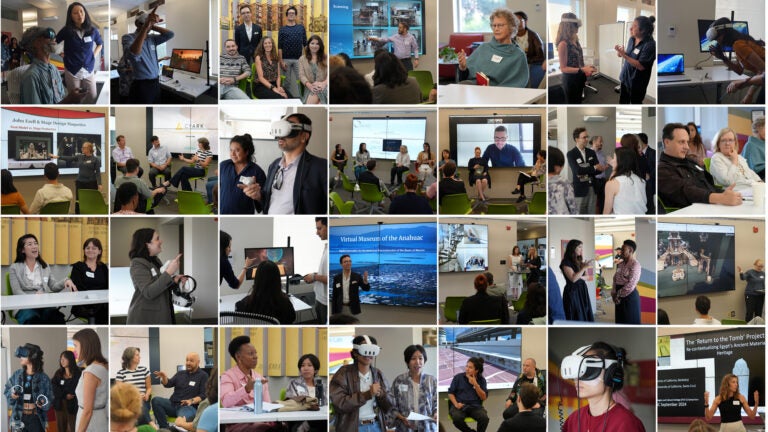ITCH 3
Join us for the 3rd annual ITCH Symposium, co-hosted by USC Dornsife, the Ahmanson Lab in the USC Libraries, and the UCLA XR Initiative. Presenters will share prototypes, insights, and creative explorations, followed by discussions on the promise and challenges of using immersive tech to reimagine cultural heritage research, teaching, and engagement.
ITCH 2025 is co-hosted by USC Dornsife, the Ahmanson Lab in the USC Libraries, and the UCLA XR Initiative.
RSVP to attend and receive pre-circulated materials.
View the ITCH 3 Symposium Program.
Presentations
- The Address Book Project and JOVRNALISM: Unlocking Hidden Histories Through
Emerging Tech
Robert Hernandez, Professor of Professional Practice, Annenberg School of Journalism, USC
Jinglin Jingan, Undergraduate Student, USC School of Cinematic Arts, USC
- Reimagining Language and Memory: Immersive AI and the Basque Boarding House of Los Angeles
Iker Otaegui, Assistant Professor, Department of Spanish and Portuguese, UCLA
Jordan Galczynski, Instructional Technology Manager, Humanities Technology, UCLA
- Experience Pompeii I.14 on Apple Vision Pro
Kai Feng Wu, Ph.D. Candidate, Media Arts + Practice, USC
- Multispecies Ethnography and Virtual Reality in Bhutanese Highland Ecosystems
Brian Young, Ph.D. Candidate, Anthropology, UCLA
- Digital Turf Project
Doug Daniels, Emerging Technologies Librarian, Library Data Science Center, UCLA
Alex Casteel, Ph.D. Candidate, Cotsen Institute of Archaeology, UCLA
Connor Lim, Undergraduate Student, Mechanical Engineering, UCLA
- Bunker Hill Refrain
Meredith Reitan, Associate Dean & Adjunct Associate Professor, USC
Andy Rutkowski, Visualization Specialist, USC Libraries, USC
Suzanne Noruschat, Southern California Studies Specialist, UCS Libraries, USC
Mats Borges, Assistant Director, Ahmanson Lab in the USC Libraries USC
Send questions to digitalhumanities@usc.edu
ITCH 3 Symposium Organizers:
- Francesca Albrezzi, Digital Research Specialist and Manager of the GIS and Visualization Research Technology Group, Office of Advanced Research Computing, UCLA
- Mats Borges, Assistant Director, USC Ahmanson Lab, USC Libraries
- Amy Braden, Director of Programs, USC–Huntington Early Modern Studies Institute
- Curtis Fletcher, Director, USC Ahmanson Lab, USC Libraries
- Sean Fraga, Assistant Professor (Teaching) of Environmental Studies and History, USC; project director, Booksnake
- Joy Guey, Emerging Technologies Advocate and Bridge Innovation Studio Director, Social Sciences Center for Education, Research, and Technology, UCLA
Banner image credit: Mats Borges & Will Young
